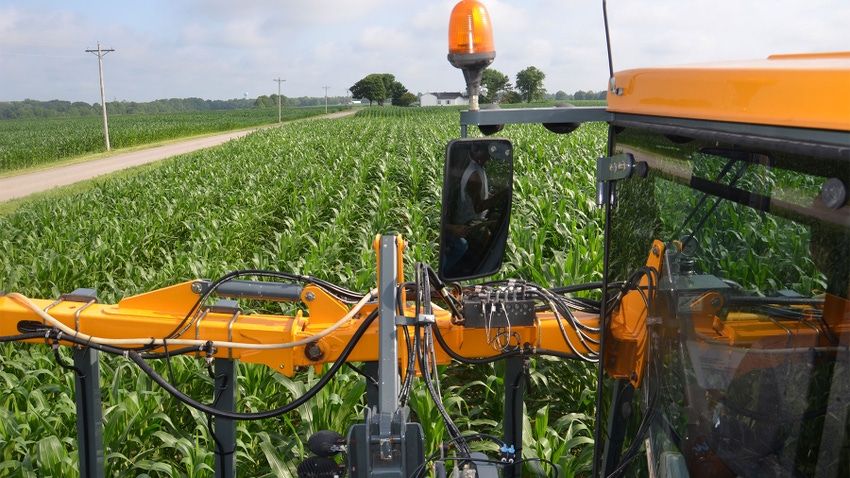April 24, 2024

Nitrogen applications at planting can give corn the boost it needs to have a strong start. But as the season goes on, it can be difficult to know just how much nitrogen is needed and when it’s needed. Does an additional application later in the season make sense?
Dan Quinn, Purdue Extension corn specialist, says the answer to that question really depends on the operation. However, he says he has not noticed benefits from nitrogen applications made from V10 through tassel during his research.
“You can kind of maintain yield, but we often don’t see a pretty strong benefit from waiting and having a percentage of your nitrogen put on at that V10 or V12 period,” Quinn says. He notes that equipment costs and labor associated with making that additional midseason pass can also be a drawback.
Aim for early-season N application
Quinn explains that incorporating an early-season N application will give you the most bang for your buck. Having some form of nitrogen at planting followed by an application around the V5 stage will ensure corn has nitrogen when it needs it without exposing N to the environment for too long.
“If we put it all out in early spring — or there’s still some folks that put some out in the fall — that’s a longer period of time for that nitrogen to be exposed to the environment and potentially be lost,” Quinn explains.
He recommends applying around 40 to 50 pounds of N per acre at planting through the planter. Then, his ideal routine would be to come back around V4 or V5 with a second pass to sidedress the remaining nitrogen of your target rate.
While Quinn does not find it necessary, a midseason application could also fit into this routine, depending on your operation’s goals. In that situation, apply about the same amount of nitrogen at planting; then apply the majority — say 60% — of N around V5. Finally, apply about 60 pounds per acre of nitrogen around V10.
“If we’re able to put a little bit in the planter and sidedress it at V5 or V6, then come back at V10 or V12, then we’re kind of spoon-feeding the corn plant,” Quinn says. “We’re minimizing our loss of nitrogen but also trying to maximize the uptake in that corn plant.”
Midseason N application may help
Quinn does see midseason or late-season applications making a difference when conditions during the growing season promote nitrogen loss. He says heavy rain following an early-season application could call for an additional application.
“We do often see a benefit where we can come back at that V10 or V12 and actually supply that corn through a rescue application,” Quinn adds.
If you choose to follow up with a midseason or late-season application, Quinn advises against skipping the early-season application and waiting for midseason. He says he sometimes sees producers pushing those applications too far into the season to where they can’t help yield. In fact, it can do the opposite.
“In our research, when we applied nitrogen at planting and said we were going to sidedress and waited until V10 to put on the remaining nitrogen, we were losing yield,” Quinn says.
Getting that nitrogen down to the soil surface during a midseason application is also important. Quinn recommends using Y-drops or urease inhibitors to promote proper placement and protection of the nitrogen. He explains, “Getting that nitrogen down to the soil surface and having some protection on it when it’s applied on the soil surface, especially later in the season, can be helpful.”
About the Author(s)
You May Also Like






